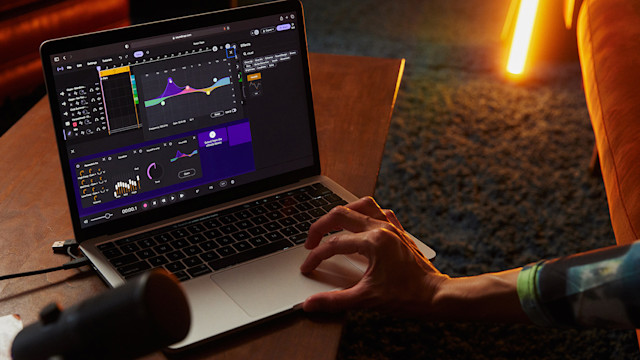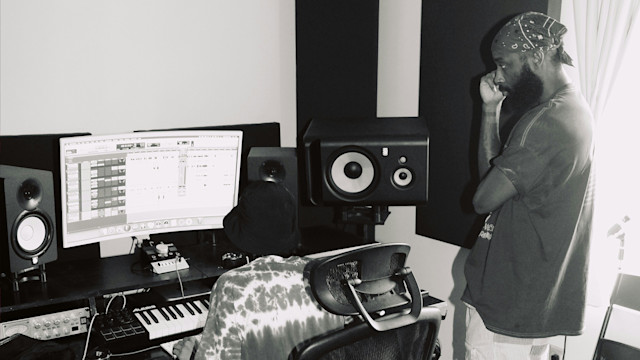Your Complete Guide to Sound FX in Music
September 18, 2024 - A comprehensive breakdown of the history, uses, and significance of sound FX in music over the years.

Finished with the music, but feel like there’s something missing? Or is there a noise you’ve heard which you feel has potential to develop into a fully fledged song. Sound FX have been used to create depth, add excitement, and make statements in popular music for years.
Though not inherently musical, sound FX have been entwined with music for millennia. Greek and Roman theatres were using special machines during plays to mimic the sound of thunder and wind sent from the gods. However the first recorded sound effect played was the sound of a baby’s cry in 1890, during a performance at a London theatre.
Here, I’ll break down the role sound FX have played in modern music, how they have influenced countless musicians & audio engineers, and how you can use them in your productions!
Musique Concrète
Musique Concrete is a type of music composition that makes use of found sounds and raw recordings- the recorded audio is then manipulated to form a collage of sound FX. It was developed by French composer Pierre Schaeffer in the early 1940s, as a compositional practice, where music was specifically designed for the gramophone. It was the first time music had been made with the method of music playback being considered, and it revolutionised how people thought about music and production.
The key thing to take away here is that the propagation of sound FX being used in music ran parallel to the explosion of availability to music technology. Microphones and tape recorders became widely available in post-war Europe, and contributed massively to how we view music. Even today, we have software and plugins that aim to emulate the warmth of tape and crackle of microphone interference. We’ll see this pattern over and over again throughout the decades, and cover how sound FX in today’s musical landscape are used in greater detail.
One of my favourite artists is a guy called Jacques, from France. He is a disciple of Musique Concrete, and testament to the lasting influence of the movement. In the video below, you can see how sound FX and musical foley can be layered and looped to form a sophisticated collage of found sounds.
Early Popular Music
Using sound FX as a form of experimentation, expression and ‘world-building’ within popular music only really began after the Second World War. Advances in portable recording technology allowed producers and audiophiles to record the sounds in locations which would have been challenging to record in previously.
The 1960s
Examples of musique concrete and sound FX in popular music did not start cropping up until the 1960s, when the notion of popular music as an entertaining commercial product began to be challenged. The Beatles’ infamous “Tomorrow Never Knows” unleashed the avant-gardé into the homes of countless millions, and helped usher in the burgeoning cultural psychedelia of the 1960s. Bands that followed in The Beatles footsteps used these sounds for added psychedelic effect. Notable examples from the 1960s include:
“Summer In The City” by The Lovin’ Spoonful.
One of the biggest tracks of the 1960s, and for good reason. Insanely catchy, but also featuring a series of sounds from a city, including car horns beeping and a pneumatic drill. This track was also one of the first to use an overlapping crossfade, to accommodate for the use of sound FX.
“The Letter” by The Box Tops
In this track, the sound of an overhead jet can be heard. It was The Box Tops first and most successful single, and is a great demonstration of how sound FX came to be used gradually and sparingly in pop music at first.
“The Fly” by Chubby Checker
This is a great example of sound FX being used almost as a kind of Foley in popular music. An electric shaver was used to mimic the sound of a fly, though how effectively, is up for debate! Again, this was an example of sound FX being used more as a novelty.
The 1970s
If the 1960s laid the groundwork for the use of sound FX in music, then the 1970s was when sound FX in music became ubiquitous. Sound FX were recorded at a higher fidelity than in the 1960s, and they did not have to be hidden through crossfades and basic analog processing. They were able to be front and centre of many influential pieces of music, and make serious social and political statements. Note examples from the 1970s include:
“The Dark Side of The Moon” by Pink Floyd
One of the most influential and biggest selling albums of all time, notable for the vast array of sound FX and found sounds used throughout. “Money” is a fantastic example of how sound FX, processed fairly dry, were used rhythmically and percussively.
“Autobahn” by Kraftwerk
Perhaps one of the most influential tracks in the development of electronic music, “Autobahn” featured a sound collage of traffic noise and cars.
Throbbing Gristle, Brian Eno, Cabaret Voltaire
Early industrial and ambient music of the 1970s completely changed what was acceptable within the normal realms of popular music. Using tape manipulation and looping, these bands and artists were able to create complex arrangements that featured a wide array of different sounds.
Sampling Sound FX
As mentioned earlier, the advent of new technologies changed what people thought was possible with sound FX. Even in the 1970s, the processing was much drier and less sophisticated than what we often see today. With new hardware and software, came a revolution in sound manipulation. There were some essential pieces of technology that helped facilitate the use of sound FX in popular music:
The Mellotron (1960s)
Used by John Lennon and Paul McCartney on “Strawberry Fields Forever” (and many other Lennon/McCartney songs), the mellotron was able to generate sounds recorded across 35 different tape heads. Until digital samplers became more available, the mellotron was one of the only ways a keyboard could imitate either a violin or oboe.
Fairlight CMI (1970s)
A sampler and synthesiser released towards the tail end of the 1970s. The manufacturers of the Fairlight were the ones to coin the term ‘sampling’ to describe one of the Fairlight’s features in reproducing sound FX.
Akai MPC (1980s)
Invented by Roger Linn (creator of the infamous LinnDrum), the Akai MPC allowed users to assign samples to pads, and play them like a keyboard. One of the most notable users was boom-bap producer J Dilla, who managed to humanise his MPC through adding specific amounts of swing to each sound effect.

The Digital Era
In the digital era, using sound FX in music has become far easier through the immense capabilities of digital audio workstations. Perhaps one of the most famous tracks of this era featuring relatively dry sound FX is M.I.A.’s “Paper Planes.” The sounds of gunshots and cash registers not only completed sentences in the song, but were crucial in supporting lyrics that touched on class conflict, anti-colonialism, and satirising Western society’s negative perception of immigrants.
When it comes to sampling using digital audio workstations, the possibilities for manipulation are virtually endless. The relative ease of integrating sound FX into your compositions and productions means that now certain genres have been defined by certain sound FX. Here’s a few examples:
Lo-Fi
Rainfall is perhaps the most commonly used sound effect in music in recent years. Its ubiquity in Lo-Fi has helped associate the genre with a cosy, nostalgic feeling. Finding the right high quality sound FX can be challenging, but platforms such as Soundtrap come equipped with genre specific sample packs for your productions.
Jersey Club
Jersey Club it’s having a mini renaissance on TikTok right now, but it’s known for its frequent use of specific sound FX in tracks, such as bed squeaks. You can hear bed squeaking sound FX in tracks like ‘Currents’ by Drake.
Gangsta Rap & West Coast Hip-Hop
When it comes to West Coast Hip-Hop, gunshots are most commonly associated with the genre, as well as its subgenres, Drill & Trap. They can be used often as transitions, and also to highlight certain words and phrases to make them sound more impactful.
Using Sound FX
So you want to make use of Sound FX in your productions and compositions? There are a few things you’ll need to know and get your head around before you get started. It’s not as simple as dragging and dropping sounds into your DAW and calling it a day. There are a couple of things to consider.
Tools
Depending on how you want to make use of Sound FX, it might be easier to pull your sounds into a dedicated sampler within your DAW. Platforms like Soundtrap have built-in samplers, which can take recordings on your phone and automatically map them out across your keyboard. Having your sound effects mapped correctly to a keyboard or midi controller makes using them rhythmically far easier, as they can be quantized and snapped to your grid with ease.
Copyright
It’s really important you don’t get caught out using Sound FX which are under a specific licence, or using samples which require clearing. The Verve’s “Bitter Sweet Symphony” is perhaps the most extreme example of an artist losing out huge royalties when using an uncleared sample. Many DAWs contain built-in sound FX which can be used, but these are often limited to only several hundred, which leads to generic sounding beats. You’ll often see the phrase ‘royalty-free’ to describe Sound FX and samples. This means you don’t have to pay any money to the person who created the sound if you’d like to use it on your own tracks. Soundtrap allows seamless blending of Sound Packs, as well as licensing of freesound.org, so you’re never short on unique sound fx and samples.
Conclusion
Using Sound FX in your productions can be a great way to excite listeners, add cinematic depth and convey social and political messages- in some cases, even be a hallmark for entire genres. They have a unique place in the history of popular music production, and understanding how to properly utilise sound FX can really elevate your composition and arrangement skills. The key thing is to make sure you’re using the right tools, and asking the right people for permission before you start chopping things up!
About the author
Max McLellan is a composer, songwriter, and audio engineer with credits ranging across film, TV and radio. He provides composition, mixing, and mastering services through his company MKM Audio.
Get started with Soundtrap today!